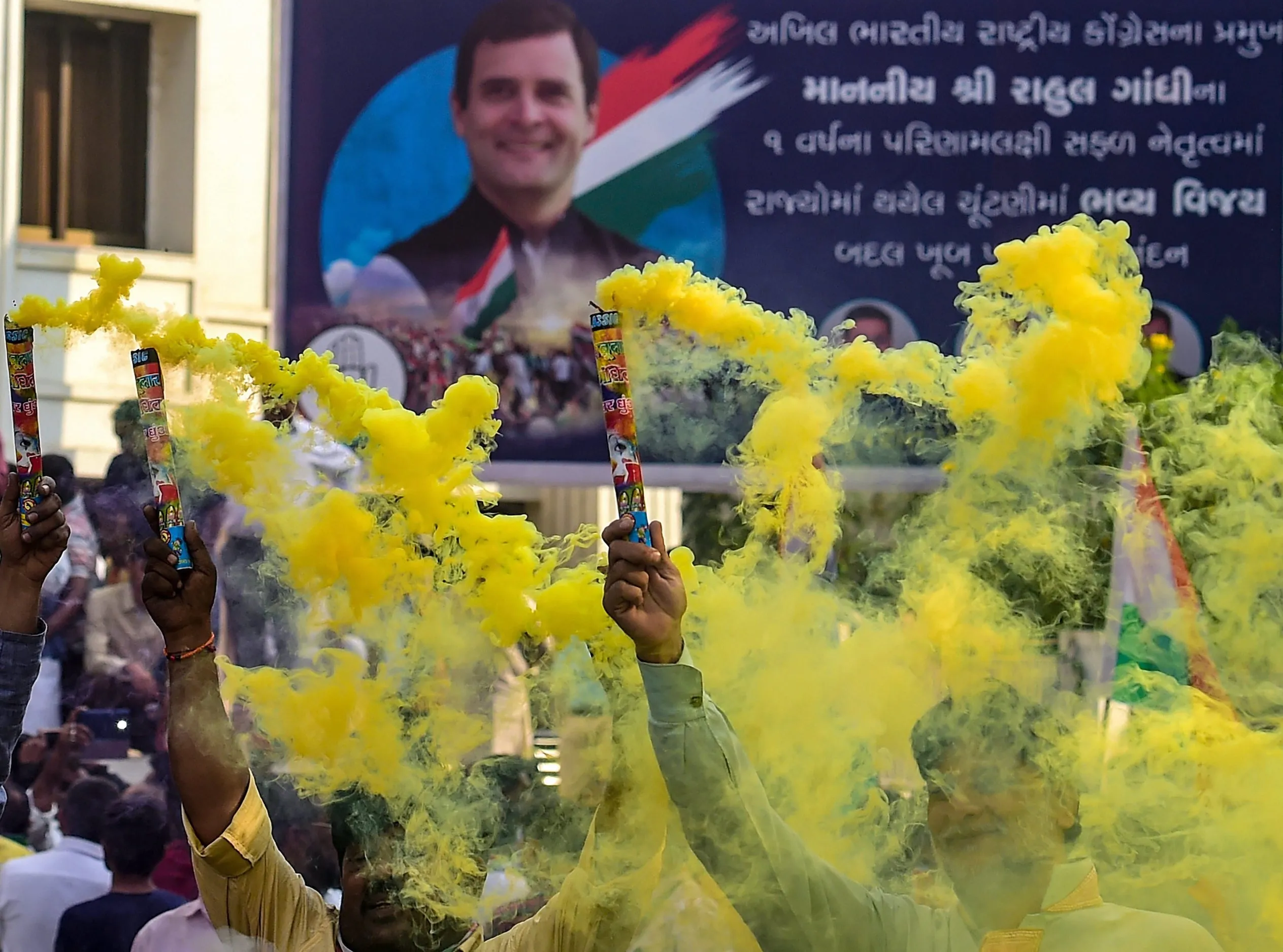-
CENTRES
Progammes & Centres
Location
As for the Congress, how it chooses its governments and its allies henceforth is crucial.

Image Source: PTI
There have been winners and losers aplenty in the elections to five state assemblies; one of the biggest winners is the Election Commission, which has responded to oft-stated concerns about the integrity of the voting process by increasing its examination of paper audits for each round of voting. This is why the counting seems to have taken longer this year; which is a small price to pay, surely, for a reminder that the conduct of India’s elections remains one of the greatest public achievements in the world.
While the final results may thus trickle in over time, the overall trends are clearly discernible. And there are several big takeaways.
First, the Bharatiya Janata Party is not invincible. The enormous popularity of Narendra Modi is not sufficient to guarantee victory in each and every election. In particular, it is far from certain how the youngest voters feel about the BJP. Certainly, the 18-25 age range in this election seems to have been open to the possibility of voting for the Congress — a revival in the grand old party’s fortunes that seemed extremely unlikely as recently as two years ago. The reasons for this could be manifold, but two are likely to dominate the post-poll conversation. The first is that, by any measure, the Modi government has not been a conspicuous success in terms of job creation. For a young person in 2018, the future is no brighter than it was in 2014. This will naturally mean that they are open to alternatives. The second reason is that divisive, identity-based politics is not necessarily a draw. It repels as many as it fascinates. For a brief period, it seemed that Modi would through sheer charisma manage to both speak to the identitarian and the more pragmatic sections of India’s aspirational youth — but that period seems to have passed.
Second, the Congress’ years-long campaign to demonstrate that it is not a party only of India’s religious minorities appears to be working. Analysis conducted by the party after its near wipeout in 2014 made it clear that it was seen as a “Muslim party” — Sonia Gandhi acknowledged this perception in so many words at the India Today conclave in November 2018. Her party, she said had been “pushed into a corner” because of the BJP’s success in branding the Congress as a “Muslim party,” and thus Rahul Gandhi had to propagandise his visits to temples — whether in Gujarat last year, or in Karnataka earlier this year, or in this current round of assembly elections. The Congress’ Madhya Pradesh manifesto could have been written by a RSS-leaning think tank; it even promised a cow shelter in each village. This is a clear concession to realpolitik, and one that appears to have paid off.
Third, a major difference between the BJP and the Congress remains that the former’s party organisation is several times more efficient — and a dozen times better funded — than the latter’s. This is an important part of the BJP’s resilience in Madhya Pradesh in particular. There are very few states where the Congress’ organisation has not withered away; Rajasthan and Maharashtra, where it has been in power relatively recently, are two such states. But in places like Bihar, Uttar Pradesh and Madhya Pradesh the party’s revival is significantly tougher thanks to its shortage of grassroots workers. It has been said that the BJP’s workers create political momentum, but political momentum creates Congress workers, and that appears to be true in MP at least. Seen from this angle, Vasundhara Raje Scindia’s achievement in Rajasthan in going down with dignity rather than being wiped out is greater than that of many of her counterparts in this election.
Fourth, the BJP’s high-risk gamble with Uttar Pradesh Chief Minister Adityanath has had mixed benefits. The places where the controversial monk-politician campaigned have not necessarily gone for the BJP in the elections; yet the very fact that he is now central to the build-up of energy and momentum among party loyalists means that he is more than just any second-rung BJP leader. He is certainly more popular than BJP president Amit Shah; and even many Modi loyalists see him as the obvious successor. It is uncertain what the thoughts are of the Modi-Shah duo’s in this case. On the one hand, they have given him a greater profile than other CMs; on the other hand, they could well seek to set him up for a fall. But in these elections Adityanath risked nothing, and gained a great deal in terms of national coverage and stature.
Finally, the question remains about where the two main contestants will go from here. For the BJP, there remains something of a cushion: most believe that the national BJP and Modi himself remain more popular than its state governments and its state-level leaders. Certainly, the BJP vote-share in the 2014 general elections in these states was significantly higher than in the 2013 assembly election just a few months earlier. But it cannot assume that this Modi cushion has not also been significantly eroded. In other words, it faces a choice: will it double-down on the Modi message of aspiration, development and welfare or will Adityanath-style open divisiveness serve it better? If it believes 2019 will be determined by turnout and energy in its core voters, the second would work; if it wants to keep expanding its social coalition to make up for any attrition since 2014, then the first is more reasonable.
As for the Congress, how it chooses its governments and its allies henceforth is crucial. Will it go with the old guard or has Rahul Gandhi’s generation taken over completely? And now that it has demonstrated its capability to revive, can it create energy around an anti-BJP coalition? Rahul Gandhi has finally an achievement or two to point to, but his task is just beginning and looks as hard as ever.
The views expressed above belong to the author(s). ORF research and analyses now available on Telegram! Click here to access our curated content — blogs, longforms and interviews.

Mihir Swarup Sharma is the Director Centre for Economy and Growth Programme at the Observer Research Foundation. He was trained as an economist and political scientist ...
Read More +